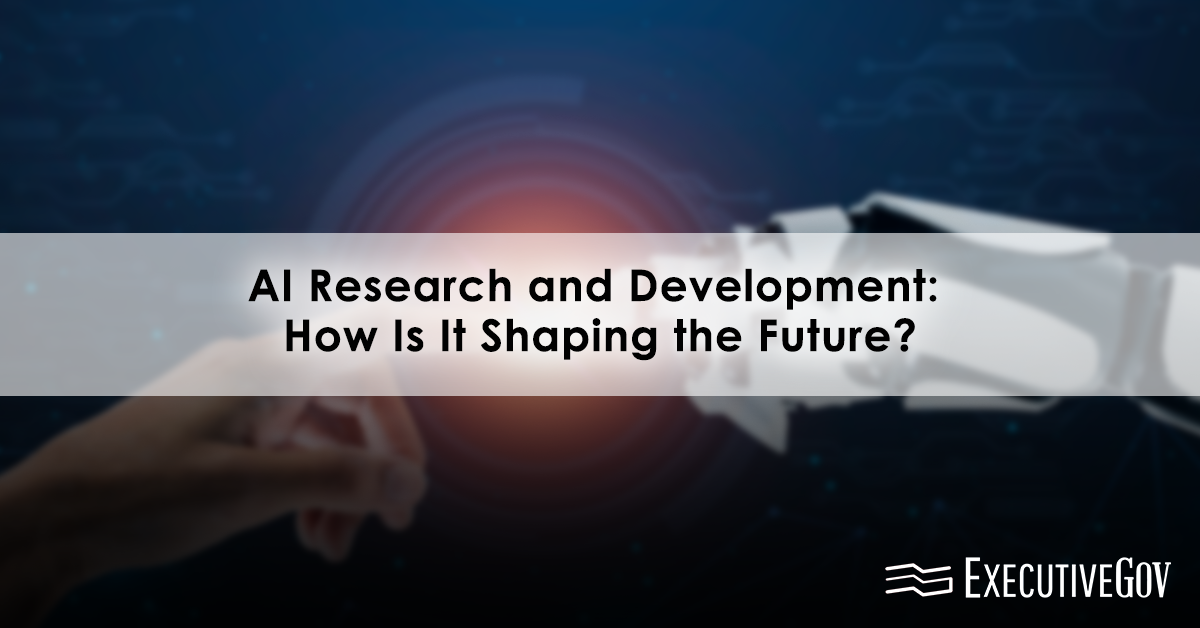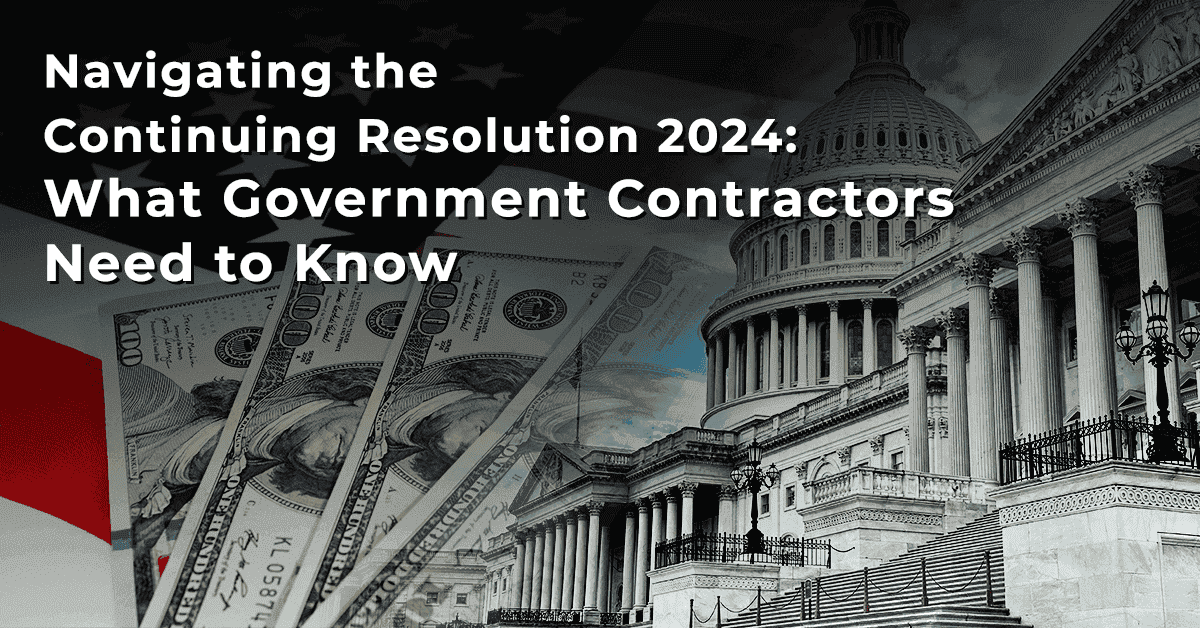First coined in 1956, artificial intelligence has now become a big part of our world. AI research and development is rapidly changing operations in governments, societies, and industries.
In 2035, AI technologies are envisioned to increase labor productivity by up to 40%, simplifying work and improving people’s commitment toward business growth. Here, we explore AI research and development and what it means for the U.S. government.
Table of Contents
Impact of AI on Various Industries

AI can make operations smoother, improve decision-making, and enhance the accuracy and success of military missions. AI research and development progress is particularly strong in autonomous systems, predictive analytics, and cybersecurity.
Let’s explore how AI is driving advancements in the major government sectors.
Defense
Artificial intelligence surpasses human speed and accuracy for tasks like data analysis and threat prediction. It handles dangerous missions to reduce risks to soldiers and enhances cybersecurity, such as facial recognition and automated threat detection.
For example, autonomous systems powered by AI, like drones and unmanned aerial vehicles (UAVs), can perform reconnaissance and combat operations. Predictive analytics also use AI/ML models to forecast threats and maintenance needs.
Without AI, the defense sector may face reduced operational efficiency, slower decision-making, and vulnerability to advanced threats. It can lead to the U.S.’s inferior strategies and technologies compared to nations that leverage AI research and development advancements like Russia, China, Iran, and North Korea.
Read more: 10 Anti-Drone Weapons Used By The U.S. Military – Potomac Officers Club
Healthcare
The healthcare sector employs AI to reduce human error, support medical professionals, and provide patient services.
AI technologies currently used in healthcare include new links in genetic codes, surgery-assisting robots, administrative tasks automation like data entry, and treatment options personalization. Meanwhile, AI tools commonly include sensors for patient movement tracking, ultrasound technology for disease diagnosis, and AI technology for cardiovascular care.
AI research and development makes a big difference in drug discovery by making the process of finding life-saving drugs faster and cheaper. For example, Novo Nordisk works with Valo Health to develop new treatments for heart and metabolism issues quickly using an AI-powered computational platform, patient data, and human tissue modeling technologies.
Automotive
Besides self-driving cars, AI research and development makes vehicles safer by building more efficient manufacturing and driving experiences through personalized voice assistants and infotainment systems.
Machine learning, computer vision, and natural language processing enable autonomous systems, such as the advanced driver assistance systems (ADAS). These technologies improve the vehicles’ abilities to detect hazards, make real-time decisions, and learn from user data to improve performance and safety.
Consequently, AI automates tasks, optimizes supply chains, and ensures quality control in manufacturing. BMW now using AI-powered systems to spot defects in car parts, reducing the number of faulty pieces. Ford and BMW also use cobots for quality control inspections, guiding, welding, and more.
Without AI, automotive brands can lose the further development of autonomous driving and their competitiveness and market share.
Read more: Noteworthy AI Startups Poised for Success in 2023 – GovCon Wire
Finance
AI technologies enable the fast processing of financial data to provide personalized customer services, financial plans, and product recommendations. Chatbots handle customer queries, while sophisticated tools crunch numbers for risk assessment and credit scoring.
AI products and services commonly used in the finance sector include personalized banking assistants, fraud detection systems, algorithmic trading platforms, and robo-advisors for investment management. These tools streamline operations and improve decision-making by offering tailored solutions and real-time insights.
Without AI, the finance sector risks lagging in efficiency, customer satisfaction, and security. Manual processes will likely struggle to keep up with the fast-growing complexity of financial data, leading to higher operational costs and more errors. Plus, institutions will become more vulnerable to cyber threats, risking client trust and finances.
Environmental science
AI is revolutionizing climate science, wildlife conservation, and agriculture. Farmers can use smart agriculture technology to use water more efficiently and boost crop production while reducing environmental impact. In wildlife conservation, AI-powered image recognition tracks the movements of endangered species to protect them from threats.
Google, American Airlines, and Breakthrough Energy collaborated to maximize the power of AI and tackle aviation contrails. These streaks, often seen tracing the skies behind aircraft, are not just visual phenomena but have implications for our planet’s climate.
The teams used AI research and development to meticulously analyze satellite imagery, weather patterns, and flight paths to create advanced maps that can predict the formation of contrails. This study allows pilots to adjust their routes intelligently and minimize their environmental footprint by reducing contrail formation.
Without AI, the environmental science sector will likely respond slower to environmental crises and be less effective in conservation efforts. The lack of precise, AI-driven insights will also hinder climate change forecasting and mitigation, sustainable management of natural resources, and biodiversity protection.
How AI Research and Development Affect the U.S. Federal Government

The U.S. needs to put in more effort to maintain its leadership in AI research and development. This strategic move isn’t just about keeping pace with China and Russia; it also includes democratizing the power of AI and making cutting-edge technology accessible to all. Here’s how AI is affecting the U.S. federal government.
Funding and grants
The Department of Defense, the National Science Foundation, and the Department of Energy are major players in AI research and development funding.
In 2022, the U.S. government allocated $4.8 billion to AI research and development. This investment empowers initiatives, such as advancing smart health technologies and data science. Led by the National Science Foundation’s AI Research Institutes, the government is committed to AI research focused on astronomical sciences and materials research.
Moreover, government contracts are laying the groundwork for future innovations. The government’s spending on AI research and development contracts surged to $3.3 billion in the fiscal year 2022. This increase signals a growing confidence in AI’s potential to transform decision science, computer vision, and autonomy.
In December 2023, the Biden-Harris Administration allocated $277 million in grants for educational innovation, with a hefty slice of the budget issued for STEM and AI projects.
Looking ahead, the Biden administration has ambitious plans, earmarked over $3 billion in funding for federal AI application development by 2025. A plan to ramp up non-defense AI R&D federal spending to $32 billion by 2026 also aims to promote more basic and applied research, upgrade R&D infrastructure, and explore new AI applications.
National security and defense
As strategic rivals like China and Russia ramp up their AI research and development investments for defense purposes, the U.S. Department of Defense is not far behind. The agency is investing billions into AI to enhance its defense capabilities, from automating basic tasks and predicting machine errors to supporting combat strategies.
The military now deploys AI-driven technologies such as autonomous drones, unmanned vehicles, and cutting-edge surveillance systems. These weapons are used in high-risk missions to reduce human casualties, collect intelligence, perform surveillance, and execute highly accurate strikes.
However, integrating AI into national security and defense has challenges and ethical concerns. AI’s dual-use nature means it compromises power networks and transportation systems as much as it can safeguard against hostile entities.
Additionally, AI’s capability to generate and manipulate digital personas, spread false information, and influence the public using chatbots harms the integrity of information and democratic processes.
Regulations and policies
The federal government creates regulations and policies to provide a framework for the responsible deployment of AI technologies in national security and defense.
The Trump Administration started the American AI Initiative in 2019 to make the U.S. a leader in AI research and development. Plans for the initiative include more research, better use of government data, setting standards, training workers, and working with other countries. This later became part of the National AI Initiative Act of 2020.
The Biden-Harris Administration keeps up the initiative, creating rules to support AI growth while ensuring the safety and respect of Americans’ rights. The goal is to reduce risks, increase benefits, and set worldwide guidelines for the responsible use of AI.
The Department of Homeland Security has launched an AI Task Force and appointed a Chief AI Officer to lead the cause of responsible AI usage. In line with this, the Office of Management and Budget (OMB) has crafted guidelines for the federal workforce’s engagement with generative AI, ensuring a seamless integration of AI into government operations, risk management, and policy compliance.
These initiatives continue beyond the U.S. borders. The administration is actively engaging with international allies to create a global framework for AI governance. The global collaborative effort was highlighted at the first AI Safety Summit in the UK in November 2023, where 28 countries pledged to tackle AI risks head-on and lead the cause of responsible AI research and development worldwide.
How the Federal Government can Maximize AI

The federal government’s increasing reliance on AI maximizes potential benefits for mission-critical services. These include insider threats, military deployment support, and responses to repeating questions. Recently, agencies have been looking to use AI to check compliance with regulations and assess government website accessibility.
Here are a few ways how the federal government can maximize AI.
More government funding for unclassified AI research and development
The government can make big technological advancements by investing more in AI research and development.
The National Science Foundation (NSF) is already doing great work supporting basic AI research. However, with more funds, it’s possible to create more comprehensive AI research and development centers and projects. Other federal agencies like the National Institutes of Health (NIH) also need to increase their AI research efforts.
Significant investments have a record of paying off in the long run. Think about how the World Wide Web and deep learning started—they came from years of government-funded basic research.
Create a federal AI advisory committee to make policy recommendations
Establishing a federal AI advisory committee can provide a platform where experts from various sectors make AI policy recommendations. It includes insights from academia, the tech industry, NGOs, and civil society on AI competitiveness, workforce, ethics, and funding.
The National AI Advisory Committee (NAIAC) was formed to guide U.S. AI development and policy. In 2023, NAIAC recommended enhancing AI risk monitoring through adverse event reporting and promoting the NIST AI Risk Management Framework.
Regulate broad AI principles rather than specific algorithms
Instead of controlling diverse AI algorithms, the government must set up general rules on AI usage. This method promotes new advancements and ensures AI is used responsibly and ethically. General rules must cover essential areas like being open about how AI works, providing a way to hold AI systems accountable, ensuring fairness, and upholding security.
For example, the AI Accountability Framework from the Government Accountability Office (GAO) suggests important steps focusing on how AI must be governed, how data must be used, how well the AI must perform, and how its use must be monitored over time. This framework helps government agencies keep an eye on the impact of AI.
These general AI rules also lay the groundwork for countries to work together on managing the technology. Many countries, including the U.S., have agreed to OECD principles for AI, which set an international standard for creating trustworthy AI.
The Role of AI in Research and Development

Using AI in research and development provides insight into the future of innovation. AI can quickly go through vast amounts of data and find patterns in a short amount of time. This is important for complex fields like climate modeling, genomics, and materials science.
Here’s a look at how AI helps in research and development.
Improved Forecasts and Predictions
The Department of Energy uses machine learning-based forecasts in solar energy research, which yields 30% more accurate than traditional methods. This makes research methods faster and more reliable, helping to improve solar technology.
Enhanced Data Analysis and Insights
Machine learning and deep learning can handle and analyze massive data sets much quicker than traditional methods. This is very helpful for data-centered government agencies to find patterns, trends, and insights.
NASA and the Department of Commerce reported the highest number of AI use cases, using cameras and radar to monitor borders and analyze drone photos.
Facilitated Collaboration and Knowledge Sharing
AI systems can improve teamwork among agencies by offering platforms and tools that make communicating, sharing data, and managing projects a lot easier. It helps everyone collaborate on research and development, using various skills and resources to tackle complex problems.
The AI Guide for Government by the General Services Administration is an example of how to help federal agencies use AI effectively and encourage collaboration.
Read more: 7 Artificial Intelligence Companies Pushing the Boundaries of AI Innovation





